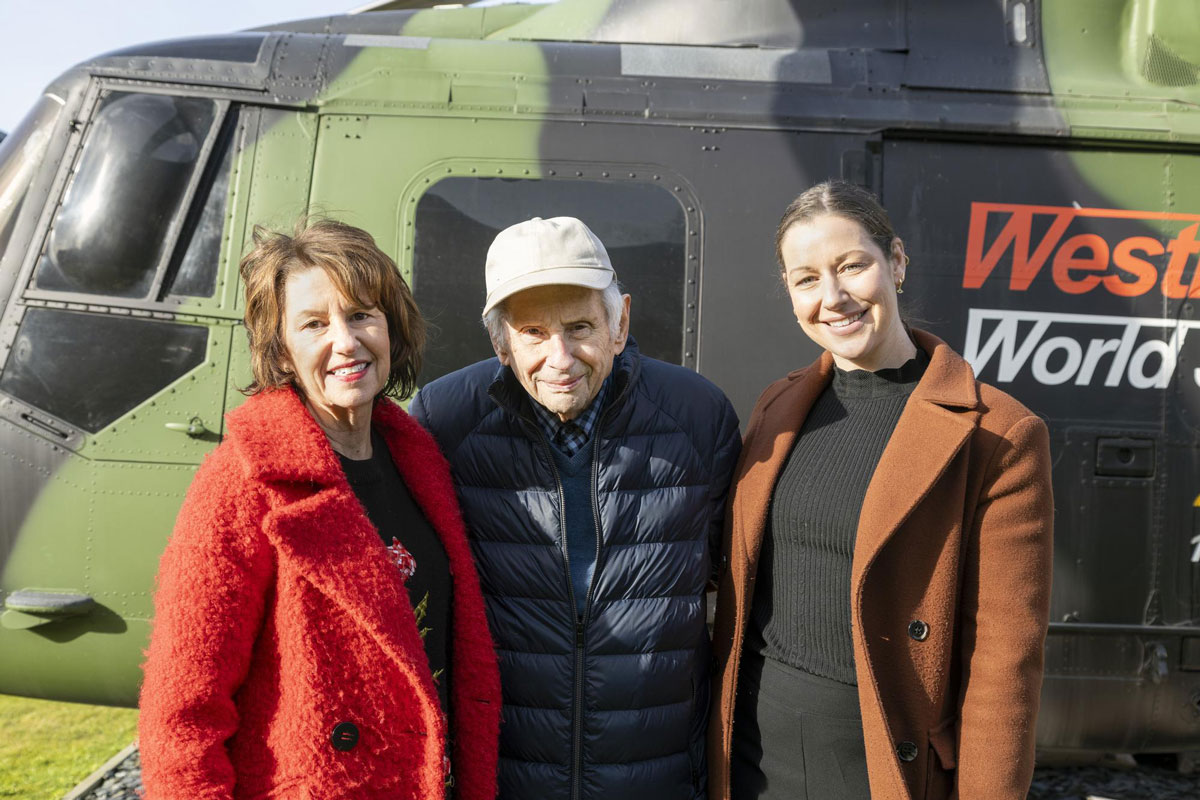Responding to a letter from his granddaughter, Charlotte Gardiner, who is the Business, Training and Partnerships Coordinator at Yeovil College, Keith was invited to the Home of British Helicopters for a tour of the aircraft hangar and facilities, and a discussion with current apprentices, joined by his daughter Helen and granddaughter. Charlotte was originally inspired to write the letter, to fulfil her grandfather’s long-held wish to revisit the site.
During his tour, Keith was struck by the sheer scale of the facilities, which dwarfed the original buildings he worked in. He remarked at how clean and warm the build line and flight shed were, in stark contrast to the rough concrete floors and the ice-cold wind that would blow in under the hangar doors, while he was lying under aircraft fitting control runs and wire looming. Keith also remembered that during the 1940s, the company still produced fixed-wing planes that had been built at the Yeovil site since the early 1900s, including Lysanders.
Retracing his workplaces across the decades, Keith was fascinated by the new glass cockpit displays, where all the instruments are virtualised in a single glass display, and he quickly noticed the complexity of the wiring looms that wind their way through the airframe.
Matt Grindon, Test Pilot, Flight Operations Leonardo UK, who explained the intricacies of the new helicopters to Keith, said: “It was a great honour to host Keith around the hangar and enjoy his stories from the early beginnings of helicopter production at the Yeovil site. His experiences brought us all closer to living history – fascinating!”
Keith worked at the Yeovil site for over 40 years, working his way up from an apprentice to a team leader, and making his own tools for his daily work. He brought in photos to show the apprentices, with one photo – which is currently proudly displayed full scale on-site at Yeovil – showing him standing in a group by the first EH101 prototype. Keith and his family were photographed with Leonardo apprentices in front of the G-Lynx Helicopter, the aircraft that broke the world airspeed record for helicopters – an event which Keith clearly remembered since he worked at the company at that time.

The apprentices and Keith compared the variations in manufacturing and testing techniques, due to modern computing and technology. Comparisons of particular interest were the change in the manufacture of rotor blades, the use of the cross sections of props, and composite rotor construction, including recycling. In comparison, Keith explained old methods of fabric and wood rotors, with the change to metal in later years.
While there were remarkable differences, Keith soon found common ground in the experiences of the current generation of apprentices. When he began his apprenticeship, like many others at that time, Keith lived in Weymouth, lodging in a house for the week in Yeovil and returning home at the weekends.
Jack Gibb, third year Engineering Degree Apprentice, follows a similar weekly pattern, along with several other apprentices in Yeovil, lodging for the week in Yeovil then commuting back to London at the weekend.
Jack said: “Keith said that when he lived in Weymouth it was still the era when bombs were dropped overhead. Around the time that he joined, he would have to hide in shelters in Weymouth. It was quite shocking to hear he was going through that and those memories are still very real to him. His story was a stark reminder that what we do here is important and it does have meaning and influence in the world.”

